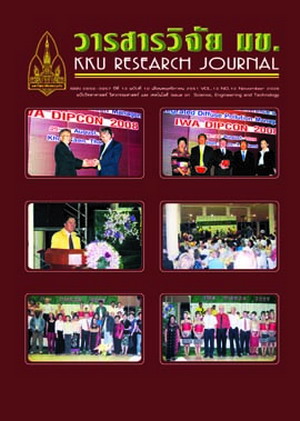Modeling approach to water quality management in the lower Pong river, Thailand
Main Article Content
Abstract
A water quality modeling study was performed for water quality management in the Lower Pong River. The model is based on the modified GEP EPD-Riv1 in an integrated Geographical Information System (GIS). Hydrology was predicted using the conservation of momentum and continuity model, and surface water quality by the conservation of mass and biochemical kinetics model. The main input variables to the models were information on river branches, point source pollution, water quality and kinetic coefficients. Input data were both from field surveys and literatures. The model was calibrated with the field data of water quality sampling in December 2006. The simulating data was reasonably well fit with the field data. In this case, the river flow has great impact on DO in the river, due to the existing high background and non point source pollution. Based on the simulation performance, the lower Pong river could be divided into three sections based on its carrying capacity. At the critical section about 32-33 km downstream of Ubolratana dam, the flow should be discharged at 22.65 m3 /sec to maintain water quality suitable for aquatic organism (DO higher than 2 mg/l). This section is required for an intensive monitoring and strict mitigation measures of any activities of land use.
Article Details
How to Cite
Tantemsapya, N., Wirojanagud, W., & Suwannakom, S. (2017). Modeling approach to water quality management in the lower Pong river, Thailand. Asia-Pacific Journal of Science and Technology, 13(10), 1199–1206. retrieved from https://so01.tci-thaijo.org/index.php/APST/article/view/83515
Section
Research Articles


